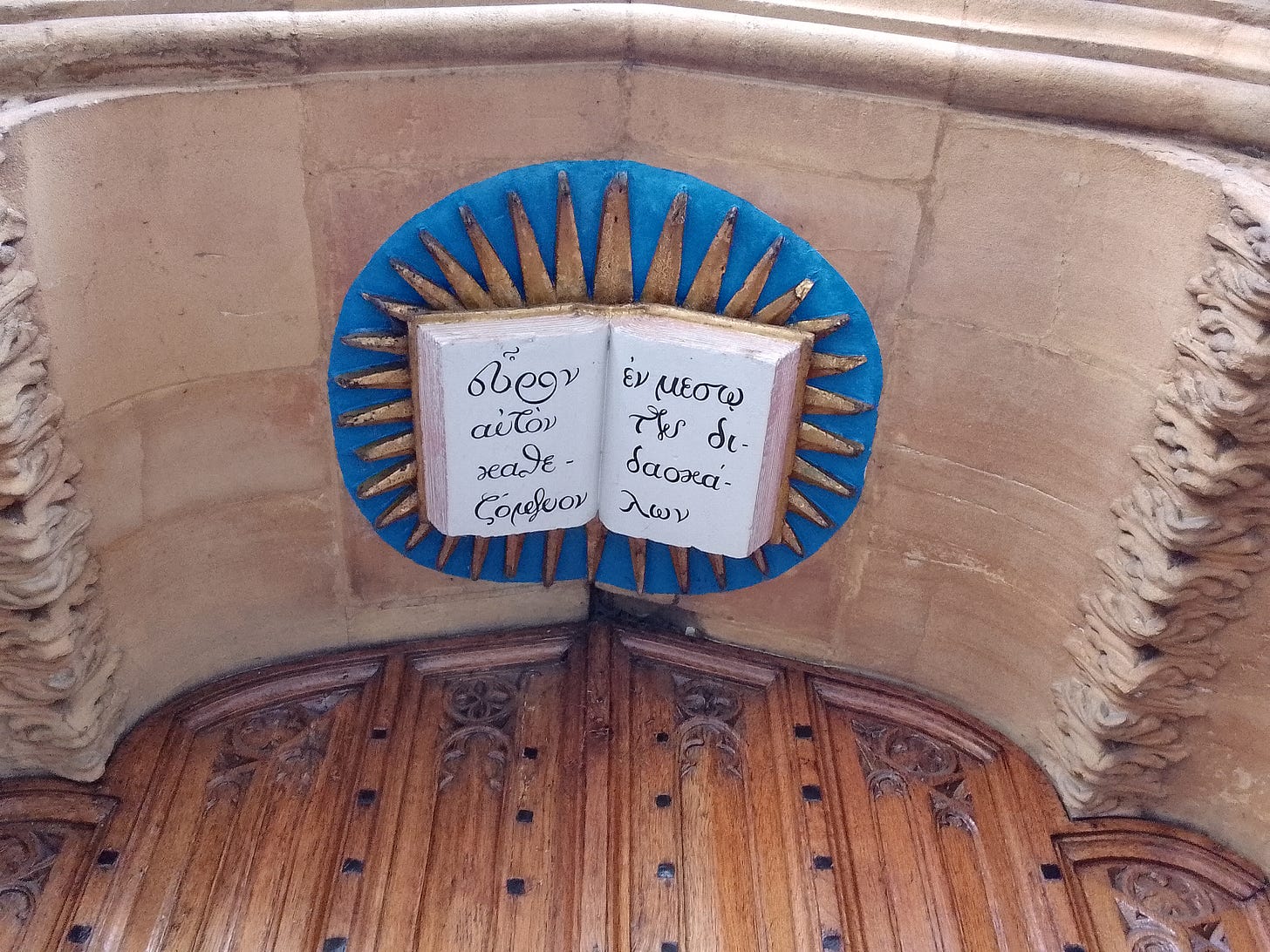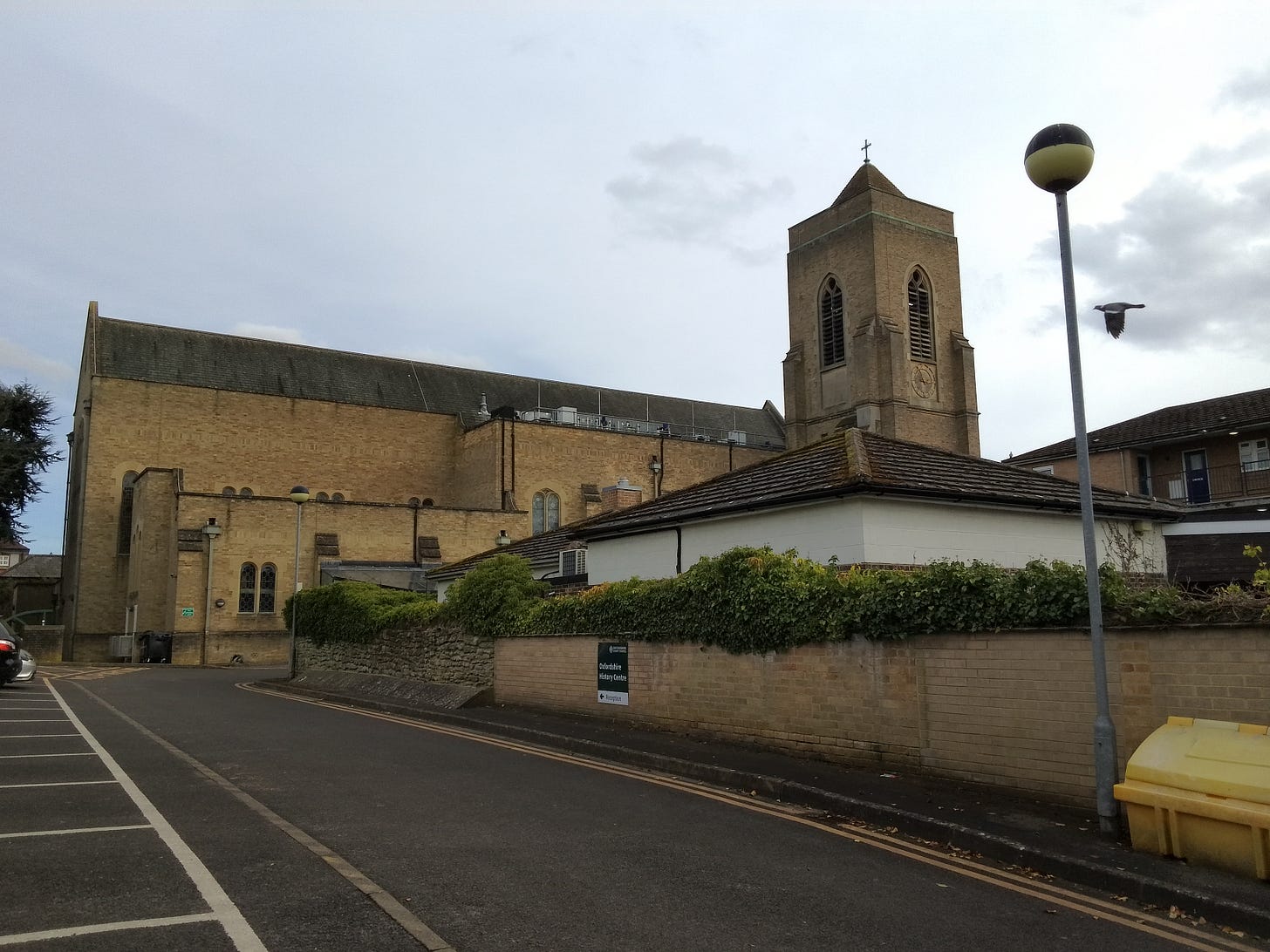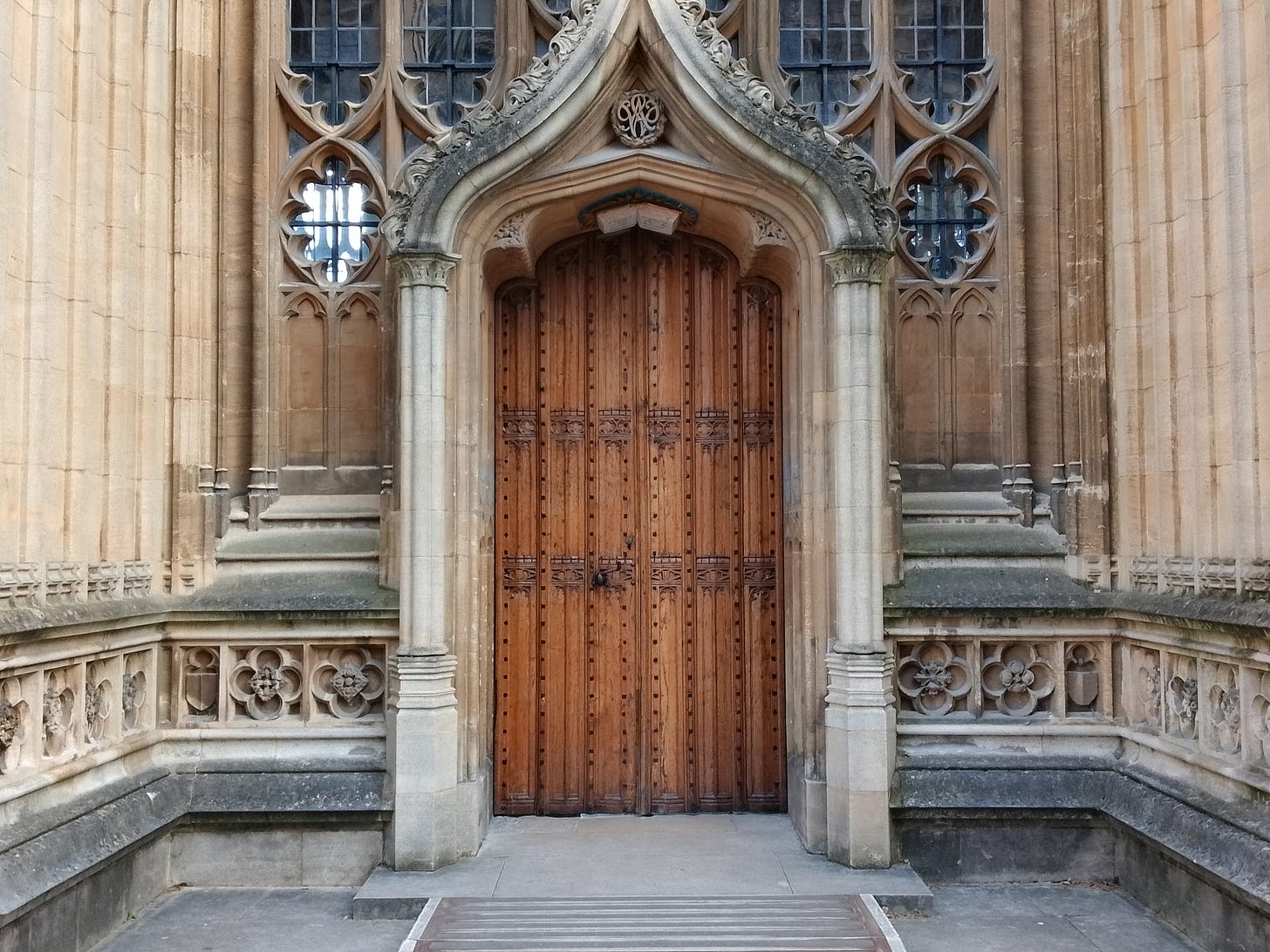Oxford's Only Greek Inscription: The Message Everyone Walks Past
A hidden Greek message in the heart of Oxford
Above the north doorway of Oxford’s Divinity School (a striking feature attributed to renowned architect Sir Christopher Wren) is a sublte yet significant Greek inscription: Και εὗρον αὐτὸν καθεζόμενον ἐν μέσῳ τῶν διδασκάλων (“And they found him sitting among the teachers”).
This phrase, unnoticed by countless visitors each year, comes from the Gospel of Luke. It describes a young Jesus discovered by Mary and Joseph after days of anxious searching, calmly seated among scholars in Jerusalem’s temple, astonishing them with his wisdom and insight. Luke vividly captures this moment: “All who heard Him were amazed at His understanding and His answers”.
As a Greek student living in Oxford, encountering this inscription sparked immediate curiosity. I was accustomed to Latin engravings decorating Oxford’s historic buildings, but Greek?
Why was this particular scene selected to adorn the Divinity Shool Entrance?
Deeper meanings and symbolism
Seeking deeper understanding, I contacted Dr. Dimitrios Bathrellos, a theologian, priest and visiting professor at Cambridge. Bathrellos explained its profound theological symbolism, portraying Jesus not only as learner but also as wiser than his teachers. He stated: “This scene embodies discipleship at its finest. The essense of education is for students to surpass their mentors, symbolising teaching as a sacred pursuit.”
“Historically, universities like Oxford emerged within Christian Europe” Bathrellos emphasised. He also noted that theology once reigned supreme among academic disciplines, with Ancient Greek intrinsically connected due to its prominence in biblical text and foundational Christian theology. Indeed, Oxford’s colleges carry Christian names, reflecting their origins and historically mandating proficiency in Greek and Latin for degrees.
Searching through archives
To trace this Greek inscription’s origins, I approached Anna Petre from the University Archives. She directed me to records from the Vice-Chancellor’s accounts dating 1666 to 1697, documenting renovations that included Wren’s doorway in 1669. However, intringuingly, these records did not explicitly mention the Greek inscription. Petre suggested consulting Stanley Gillam’s “The Divinity School and Duke Humfrey’s Library at Oxford” and manuscripts within the Bodleian Library.
Following her advice, I visited the Oxfordshire History Centre in Cowley to find Stanleey Gillam’s book about the mysterious Greek inscription. Gillam explained how, in 1669, a beautiful window was controversially removed from the Divinity School to build a new doorway designed by Christopher Wren, intended for academic processions. Strangely, despite detailed records of the doorway’s construction, no one knows who requested the Greek inscription to be drawn onto an open stone book in the porch ceiling, or why it was placed there.
The blessing of learning
In the Eastern Orthodox Church, this exact Gospel passage is always read during the blessing service held at the beginning of the academic year. “Every September, when we go to perform the blessing at a school this reading is part of the service included in the Church’s Euchologion,” Fr. Gennadios Koutsopoulos, Head Preacher at Mesogaia and Lavreotiki Diocese, told me. “It’s chosen because it reveals the wisdom of the student at that stage of life, showing Jesus in adolescence, asking questions, and astonishing his elders. It also highlights one of the few, if not the only, incidents from Jesus’ childhood officially acknowledged by Church tradition” he added.
Revd. Canon Dr. William Lamb, from the University Church of St Mary the Virgin, reinforced its relevance, bringing to the fore that Ancient Greek remains essential in Anglican tradition too: “Since the New Testament was composed in Greek, clergy are often required to learn Greek or Hebrew” Dr. Lamb underlined.
What Greeks think
But how aware are contemporary Greeks, particularly those living or visiting Oxford, of this symbolic connection?
When informed about the inscription, Dr. Bathrellos expressed sincere surprise: “I visited Oxford many times yet never knew of its existence. It’s profoundly meaningful. A Greek phrase from a sacred text, affirming the belief that students should surpass their teachers”.
A diaspora perspective
To gain further perspective, I spoke with John, an academic in Oxford of Greek descent, born and raised in Texas. John offered a unique diaspora viewpoint: “I knew this biblical passage, but discovering its presence here in Oxford surprised me. While its connected to my Greek heritage, its real resonance is academic. As a lecturer, I deeply relate to the idea that educators learn from their students. Often, the most insightful questions come from first-year students, unburdened by established academic perspectives, they’re freer to ask uncoventional questions. Educations truly aims for students to surpass their teachers”.
John also shared his personal experience, explaining how learning Greek later in life reshaped his cultural identity, and deepened his connections during visits to Greece.
Oxford’s longstanding Greek connection
Defending Greek teaching methods in his article “Oxford and Greek”, historian J. L. Myres emphasised on Oxford’s and Greek scholarship’s longstanding relationship. Writing in 1912, he noted: “if Greek die out in England unmentionable evils will follow,” affirming Oxford’s deep-rooted commitment to classical studies. Indeed, until recent decades, proficiency in Greek was obligatory for Oxford’s students, reinforcing the university’s enduring dedication to classical education.
Hidden in plain sight
So, why does this inscription remain so unnoticed today?
Its quiet placement might amplify rather than diminish its significance. More than ornamental, this Greek phrase reminds passersby of enduring wisdom transcending time and geography.
For Greeks and those with Greek heritage living in Oxford, discovering this hidden inscription can evoke a powerful sense of belonging and cultural pride. For British and international visitors, it enriches their understanding of Oxford’s diverse intellectual legacy, celebrating Greece’s significant influence.
From my point of view…
Personally, the inscription epitomises a core educational ideal: curiosity, humility, and continuous learning. It invites everyone, students, teachers, or casual visitors, to pause, reflect and recognise the universal pursuit of knowledge and understanding.
The Greek inscription at Oxford wasn’t merely painted to honour historical traditions but was intended to inspire present and future generations, quietly waiting until someone like me, a Greek student exploring Oxford, would finally notice it.




